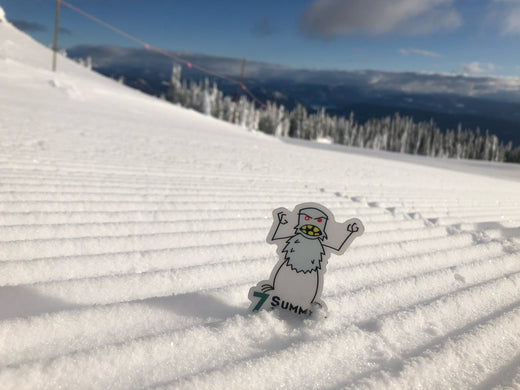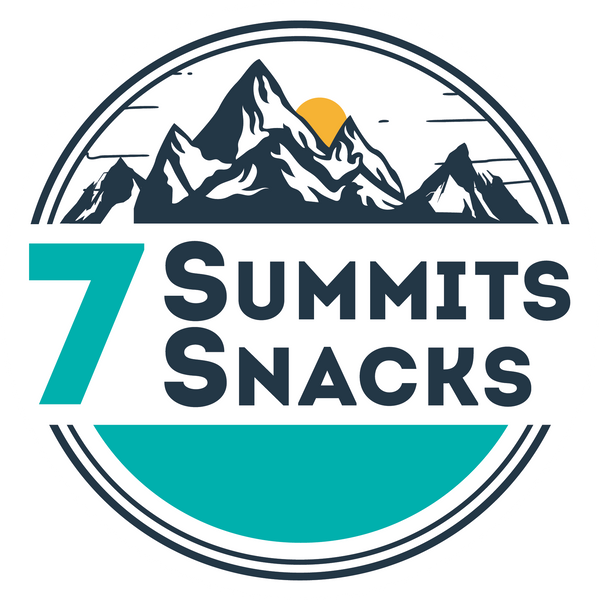
Beat the Bonk - What's Bonking?! Sports nutrition for endurance enthusiasts.
Share
I get back to the suite and tell co-founder Leanna and partner Jason who had also been running with us for 90 of those 180 minutes.
“Ohhh… you bonked!”
“No I didn’t”
“Ummm, yeah you did”
“Really?!”
“Yeah- really” with some light laughter at me.
Or something to that effect.
...
I don’t bonk! I studied nutrition, have been running for years, and profess that carb management is my thing. Oh, and I started an anti-bonking sports nutrition company… I don’t bonk!
I bonked.

Let me describe my bonking experience:
We were fit! Kate and I were training to take part in the Everest Marathon- Coach Leanna had set up a training weekend in the mountains of Canmore to help us get better at running the rugged terrain at a little bit of altitude. Kate and I had successfully done a similar camp the month before, running 3 hours one day and 2 hours again within 24 hours in the ankle deep snow in Jasper, Canada. The goal was to do this again. Easy peasy!
After a go-to breakfast of pimped-out oatmeal and armed with my 4 gels (pre-endurance bar days) for the 3 hours, we embarked on a rather delightful first 90 minutes of Elk spotting, frozen river crossing, and photo-ops. Kate and I then met with the rest of the group and moved onwards. This back half of our run was to be in the unrelenting mini-hills of the mountain bike trails of the Canmore Nordic Centre.
Throughout my training for the Everest Marathon, I had forced myself to be more positive when it comes to hill running, often trying to self-mantra: “I love hills” whilst I push up them. Dip after dip (4 strides down + 8 strides up; repeated) was compoundingly draining. Today was feeling a bit like: “Grrrrrrrrr… you can do this”. When we came to a more steady, but gentle and continuous incline, it should have felt like heaven- but didn’t.
Dropping back down into the bike trails was rough. Each little incline was leg-draining. I usually compare this feeling I have to how a battery-powered toy slows to a halt when it loses power. Throughout training, I had become accustomed to this temporary feeling; however, that day was different. There was no “go” on the downs. Every step after about 2 hours was more and more energy zapping. At some point Jason, who was leading the run, must have felt the actual death lazers I was shooting from my eyes into the back of his head, because we did ease it off and ran back down into town. Kate and I had a bit more to do to round off our time, but even flat running along the Bow River for an extra 20 minutes was a stride too far. If I remember correctly, there was probably some hangry-giving-up talk shot at Kate when approaching a minuscule incline to step up onto a curb.
Circle back to the start of the article, I dropped Kate off, and cried on my walk home.
What is bonking?
As described by Guardian writer, Carys Matthews
“Bonking describes the point at which the body’s glycogen stores are depleted and the body starts to fatigue and burn fat, making each step towards the finish line a vicious battle of mind over body. It’s an uncomfortable sensation – legs feel heavy, body drained, and the mind spent.”
For me- it was the “mind spent” aspect where I had not ever ventured in my 10+ years of distance running. It is often unexpected. It is a blow to your confidence! It’s that angry, growling monster (yeti!) in your head that categorizes a bonk. Remember your brain needs glucose more than your muscles do!

So how do you avoid bonking?!
Have a fuelling plan.
Anyone taking part in a steady effort for longer than 2 hours should be thinking about the fuel they put into their body: before, during, and after. This doesn’t just apply to running and cycling high-level athletes, this also applies to the family going on a 3 hour hike (pack your PB&J sandwiches and complimentary Denali bars), or spending your day shredding down the ski hills (and enjoy a superfood Everest bar on the lift up). Having a steady supply of carbohydrates in your system will not only allow you to play longer, but to enjoy your time spent outside because you are also feeding your brain.
Foods that don’t spike your glucose levels are a great choice for longer efforts. These are foods that also contain fat and protein. As they take a bit longer to digest, that means you are drip-feeding your system with the carbs you require, rather than tapping that Super Mario Star Power you get from a gel for the next 5 min before you get back into the mental catastrophizing zone. Seven Summits Snacks endurance bars hit the mark- 15g of carbs blended with cocoa and coconut butter to prolong the release of sugar into your bloodstream.

How do you get out of a bonk?
Be kind to yourself. Reframe your goal of the day. Be thankful that you have the ability to get outside and do what you are doing. Bonks usually come as a surprise, not as a week-in-week-out part of your training regime. “There are moments in life where you can hear that subtle growl.”...
If you find that you are bonking often, then we suggest you consult with a sports nutrition expert to help you maximize your training. If you are surprised by bonking, that’s totally normal. Accept that today wasn’t the day. Look around and be grateful (that you are running in a beautiful place) and go order yourself a well-deserved pizza…. And next time don’t forget to pack your superfood endurance bars!
- Kristyn Carriere; co-founder, marathoner, chocolate maven.